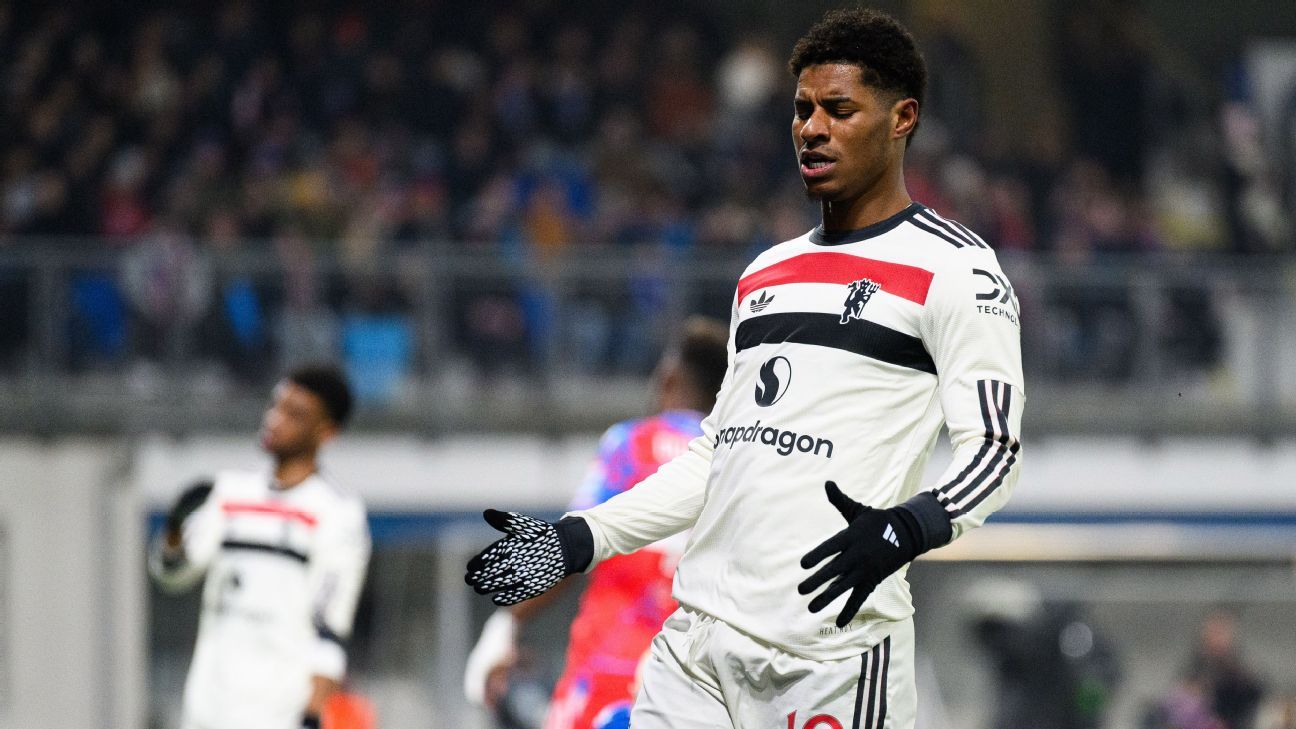Sophie Lawson
Jan 3, 2024, 09:00 AM
We're not yet halfway through the Women's Super League (WSL) campaign, but the 2023-24 season already has a different feel to other years, even if there is a familiar complexion to the top end of the table now we have entered the winter break.
Chelsea, Manchester City, Arsenal and Manchester United occupy the top four spots as usual, but what have we learned from the games so far and what could change in 2024?
- Stream on ESPN+: LaLiga, Bundesliga, more (U.S.)
Money talks
The growth of women's football over recent years has seen more money pour in, with the WSL following a similar path to the men's Premier League as an up-and-coming destination for a rapidly evolving game. Fifth and sixth in the league respectively, Liverpool and Tottenham Hotspur have developed well this season and it's no coincidence that it has come from targeted investment.
As money continues to have its say, the league will separate further, with those unable or unwilling to invest dropping away. Last season we saw financially stricken Reading relegated to the Championship and there are questions over whether or not Bristol City will avoid the same fate this campaign as the newly promoted club work with the smallest budget in the league. Then there are long-term questions over Everton's security in the WSL, with the club less financially stable than their peers. If having more money helps at the top of the table, it's even more key at the bottom.
This is the age of tactics
Over the last few years across women's football, we've seen the importance of tactical superiority. Heavyweight clubs can no longer just rely on having the best team on paper.
Although teams like six-time WSL champions Chelsea can still dig out wins thanks to the individual brilliance in their squad, we've seen a further shift towards tactical nuance this season with Matt Beard's Liverpool the (somewhat inconsistent) blueprint for nullifying their opponents' threats.
As teams like Tottenham and Brighton & Hove Albion have made holistic changes to implement the styles of their new coaches, Beard's tactical tweaks have kept Liverpool a step ahead in their games against Arsenal, Aston Villa and Manchester United. Like most of the developing teams this season, the Reds haven't managed to hit the bullseye each time out, but their added flexibility has them within touching distance of the top three.
More cards are being issued
In line with what's happening in the men's game, and despite the lack of VAR, officials have begun to clamp down on all manner of infractions from perceived timewasting to carding overzealous challenges more frequently.
Red and even yellow cards were once something of a novelty in the WSL, but there has been a substantial spike this season, with the last round of fixtures before the winter break seeing 20 bookings across the six matches. And three of those 20 were second offences which saw Chelsea's Niamh Charles, West Ham United's Hawa Cissoko and Aston Villa's Maz Pacheco given their marching orders.
As a result, we're seeing more substantial stoppage time at the end of games and managers will be cautious of the additional load on players that could end up being the equivalent of multiple extra games a season. While those in the dugout will also be wary of keeping players who have been booked on the pitch late into the second half, with referees seemingly more willing to show second yellows now.
Clean sheets are hard to find
The WSL has been more attack-minded this season, with clean sheets harder to come by. Indeed, there have only been 25 kept across 60 games so far. Chelsea, Man City and Man United are the only teams to have kept four from their first 10 matches, with fifth-placed Liverpool the next best (3), showing the value of keeping the opposition out.
With specialised goalkeeping coaches now far more commonplace in women's teams, there is still a dearth of world-class goalkeepers across the game that further highlights the importance of having a reliable No. 1.
For all their wobbles so far this term, Everton have been bailed out by Courtney Brosnan on more than one occasion and would be in a far less secure position than seventh without their dependable goalkeeper. Meanwhile, there has been plenty of noise around Arsenal's defensive issues and their endeavours to sign England and Manchester United star Mary Earps to replace Manuela Zinsberger could reap rewards.
Crowds remain inconsistent
One of the persistent issues in the women's game is crowd numbers. Even though English football has seen a sizable rise in interest since the national team won Euro 2022, most WSL teams fail to regularly get large numbers through the door. It's a complex problem that needs context, from location of the stadia used (Arsenal's regular home at Borehamwood for instance), to plenty of unfavourable kick-off times for fans.
Only 10 games this season have drawn crowds of more than 10,000 fans. While Arsenal have led the way when they've played at the Emirates (with crowds in excess of 35,000), bottom side Bristol City are somewhat surprisingly helping to bump up the league average, with three attendances having broken the 9,000 mark. But three matches this season have had attendances of less than 1,000, with many teams pulling between 1,000-3,000 fans for most non-derby games.
Gate receipts do still have a major impact for WSL clubs, as does opening up main stadiums if teams are failing to sell them out. As the women's game grows, it continues to tread the delicate balance between underselling itself at grounds that are too small for purpose and avoiding the unnecessary costs involved with moving to larger stadia.
 (1).png)
 1 year ago
15
1 year ago
15















